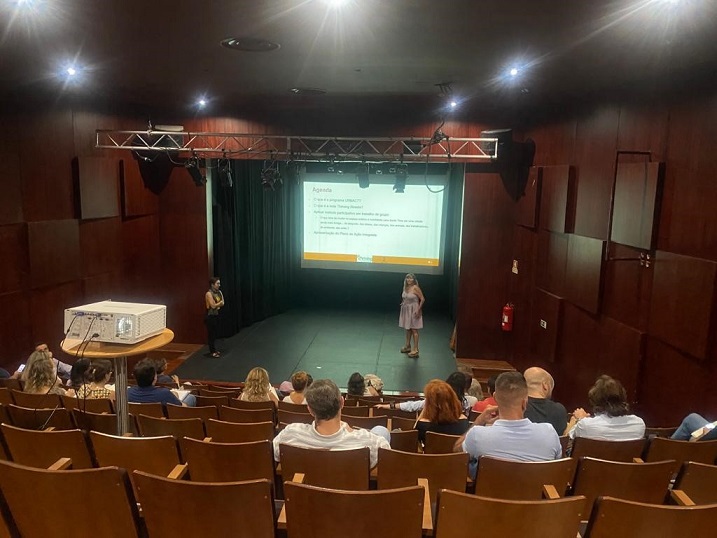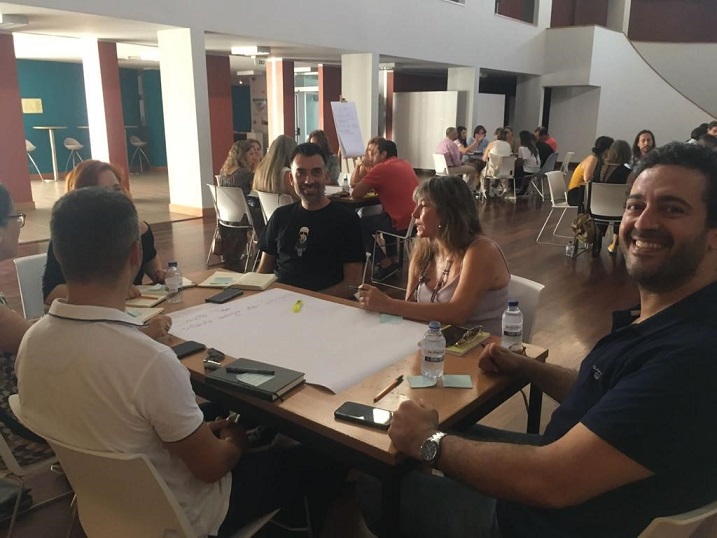URBACT co-creation methods in Santo Tirso
Edited on
30 August 2022By Ana Poças, consultant for the Municipality of Santo Tirso
One key aspect of taking part in URBACT networks is using participatory methods to involve external and internal stakeholders in a co-creation process. In the case of the Thriving Streets network, the focus of the co-creation process was to rethink a certain area of the city in terms of mobility, public space, local economy and accessibility.

In Santo Tirso we involved a wide group of external actors (the URBACT Local Group - ULG): a local cooperative supporting people with disabilities, the police, the association of local businesses, a high-school, some outdoor activities associations, the cycling federation, the hotel Cidnay, among others. Throughout the two and a half years of the project, we met online and offline, individually and in group with the ULG. From assessing the problems with mobility and public space in the center of the city to brainstorming and evaluating our Small Scale Action - the open streets event Viva a Rua (https://urbact.eu/experimenting-open-streets-santo-tirso-0 ). To evaluate the open streets we went further than the Local Group. We conducted surveys for the people attending the event, and cooperated with the Local Business Association to have access to their survey of the shops in the area. Data on the satisfaction and suggestions of visitors and local shopkeepers provided a clearer picture of the successes and points to improve. This data was a key basepoint for the evaluation meetings of the open street events with the Local Group. As we got more and more practice with participatory methods, we decided to use them in a greater scale to present the Integrated Action Plan, and brainstorm with all municipality departments.

On August 2nd 2022, we had a meeting of the municipality departmental heads dedicated to the Thriving Streets project. We used the opportunity to present our IAP and to experiment with a participatory method we learned in the Walk and Roll cities meeting in Barcelona (Linkedin group: (20) Walk'n'Roll Cities | Groups | LinkedIn).
The goal was to gather recommendations from the different departments for changing public space and mobility in order to meet a wide range of goals.
The groups were divided per theme: Environment, Children, Elderly, Animals, Workers, Sports and Arts. The question each group had to answer was:
“What changes in public space and mobility would make Santo Tirso a city friendlier for… the environment/ children/ the elderly, animals, workers, sports, and arts?” Among the group each member had a specific role. If a councilor was present, she or he would be the designated mayor for that city theme. The other roles were: a working mother with two kids, a wheelchair user, a municipal worker living in a distant parish but still within the municipality, a tourist, and a child. Besides answering the question, each member had to make an effort to think from the perspective of their character.
After some minutes of individual work, and half an hour of brainstorming, each group sent their mayor to present their recommendations in a plenary.
everal groups mentioned the same measures, which shows that some measures would benefit many areas at the same time. Multi-solving solutions, as they are called in some fields. For example: green infrastructure accessible to all, throughout the municipality to connect the population centers. Just as it happened with the Local Group, it is partly surprising and reassuring that there are more common views than disagreements when we think together about how Santo Tirso can become an even more Thriving City, for all its inhabitants, the local economy and nature.

Submitted by Patrizia Marani on
